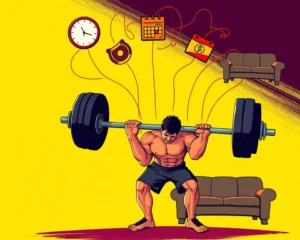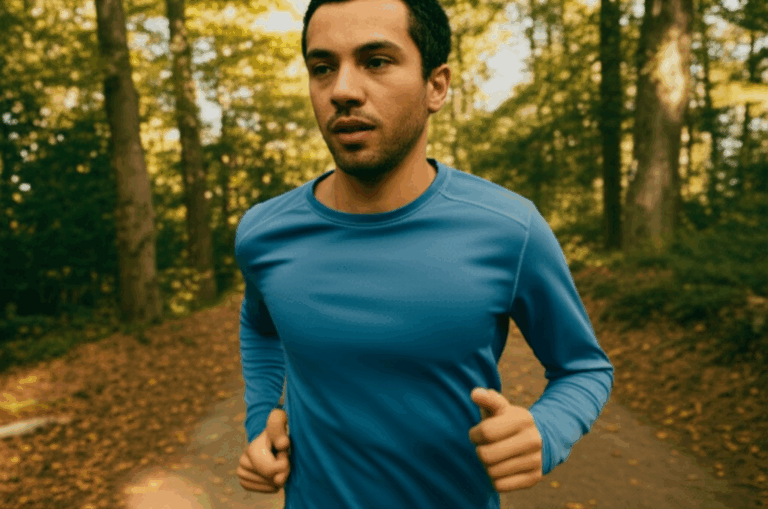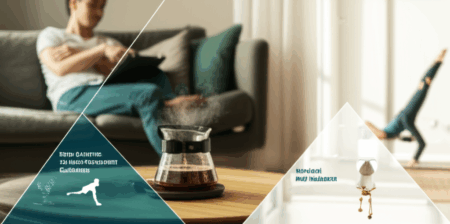In an era where children and adolescents face unprecedented mental health challenges, with conditions like anxiety and depression on the rise, parents are continually seeking effective interventions. While traditional therapies and medications play crucial roles, mounting scientific evidence points to a surprisingly accessible and potent tool: physical exercise. Far from being just about physical fitness, regular movement is now confirmed by science as a vital component in improving children’s mental well-being, offering significant benefits even for those grappling with anxiety, depression, or Attention-Deficit/Hyperactivity Disorder (ADHD).

The Science Behind the Sweat: How Exercise Boosts Brain Health
The positive impact of physical activity on mental health in children is rooted in complex neurobiological and psychosocial mechanisms. When children engage in exercise, a cascade of beneficial effects unfolds in their brains and bodies, contributing to improved mood, focus, and emotional regulation.
Neurotransmitters and Brain Growth
Exercise triggers the release of “feel-good” neurotransmitters such as dopamine, serotonin, and norepinephrine, which are the same brain chemicals targeted by many mental health medications. An increase in dopamine, for instance, is particularly important for cognitive and behavioral control. Beyond neurotransmitters, physical activity also boosts levels of brain-derived neurotrophic factor (BDNF), a protein that supports the growth of new brain cells and enhances neuroplasticity – the brain’s ability to adapt and change. This neurobiological support can improve focus, memory, and overall mood.
Building Resilience and Self-Esteem
Engaging in physical activity, especially when learning new skills or mastering challenges, can significantly build a child’s self-esteem, self-concept, and self-efficacy. Achieving personal goals in sports or activities fosters a sense of mastery and competence, which are critical for mental resilience. This positive self-perception is a consistent pathway through which physical activity influences psychiatric symptoms, including anxiety and depression.
Social Connection and Skill Development
Participation in group activities or team sports offers invaluable opportunities for social engagement and the development of crucial social skills and confidence. Interacting with peers through play or organized activities can make exercise more enjoyable and rewarding, while also combating feelings of isolation.
Improved Sleep Quality
Regular physical activity can lead to better sleep quantity and quality in teenagers, which is incredibly important for maintaining a stable and positive mood and making thoughtful choices.

Targeting Mental Health Challenges with Movement
Research increasingly supports exercise as an effective adjunctive treatment for various mental health conditions in children and adolescents.
Exercise for Childhood Anxiety
Anxiety disorders are prevalent among children and adolescents, significantly impacting their quality of life. While more research is needed, current findings suggest that exercise can help reduce anxiety symptoms. A meta-analysis involving participants aged 11-19 years showed a trend towards exercise reducing anxiety scores. Some studies indicate that light resistance training may be particularly effective for reducing anxiety. Physical activity is thought to improve mood by helping the brain cope better with stress. Furthermore, higher levels of physical fitness are associated with lower anxiety levels in children, and resilience can mediate this association. Even short 10-minute walks can provide relief for anxiety in children.
Combating Childhood Depression Through Activity
Depression is another common mental health concern in young people, and exercise has shown promising results as a treatment tool. A systematic review and network meta-analysis found that exercise significantly improves depressive symptoms in children and adolescents, with aerobic exercise often being the most significant. A 12-week intervention, three times a week for 40-50 minutes, was found to be more effective, especially in younger children. Studies indicate that a combination of aerobic exercise (like running, swimming, or dancing) and strength training is most helpful for reducing depression symptoms. Regular physical activity can serve as a preventative measure for depression and may even reduce the suicide rate. Exercise can increase dopamine and endorphins, reduce cortisol, and promote body metabolism, all contributing to antidepressant effects.
Managing ADHD Symptoms with Physical Activity
For children with ADHD, physical exercise can be a beneficial adjunctive intervention, helping to manage symptoms that affect attention, concentration, and executive functions. Both acute (short-term) and chronic (long-term) exercise have shown positive effects. Studies suggest that even 20 minutes of aerobic exercise can improve attention and behavioral regulation skills. Exercise may enhance executive functions like inhibitory control and cognitive flexibility. It achieves this by increasing neurotransmitters like serotonin and dopamine, boosting BDNF, and improving blood flow to the brain, which in turn strengthens areas crucial for planning and evaluating situations, such as the prefrontal cortex. A study specifically looking at exercise in children with ADHD found significant positive effects on anxiety, depression, and emotional regulation. Moderate-to-high intensity interval training and tasks incorporating cognitive elements are considered suitable exercise programs for children with ADHD.

Practical Steps for Parents: Integrating Movement into Daily Life
While the benefits are clear, encouraging consistent physical activity in children can be a challenge. The CDC recommends that children aged 6 to 17 get at least one hour of moderate-to-vigorous physical activity each day, with a mix of aerobic, muscle-strengthening, and bone-strengthening activities. Unfortunately, only 20% to 28% of children in this age group meet these recommendations.
Here are practical strategies for parents to integrate more movement into their children’s routines:
- Make it Fun and Varied: Instead of formal “exercise,” focus on “play time” or “active hour”. Encourage a mix of activities like nature walks, swimming, playing outdoor games, dancing, or individual sports. Variety seems to be most important for children’s mental health.
- Involve Friends and Family: Organize active playdates or neighborhood games. Family walks, bike rides, or even turning household chores into fun physical challenges can be effective. Leading by example is key.
- Incorporate Movement Breaks: Encourage short bursts of activity, like stretching, jumping jacks, or a quick run during study breaks or throughout the school day. For children with ADHD, these movement breaks can be crucial for sustaining focus.
- Limit Screen Time: Reducing screen time naturally creates more opportunities for physical activity.
- Consider Non-Competitive Options: For some children, especially those struggling with mental health, competitive sports can be overwhelming. Explore non-competitive activities like martial arts, track and field, or simply free play at the park.
- Seek Professional Guidance: If you have concerns about your child’s mental health or integrating exercise, consult with their pediatrician or an accredited exercise physiologist who can develop a suitable program.
Conclusion: A Prescription for Well-being
The scientific community continues to uncover the profound benefits of physical activity for children’s mental health. From boosting essential brain chemicals and fostering neuroplasticity to building self-esteem and enhancing social connections, exercise offers a holistic approach to supporting young minds. While not a standalone cure, it serves as a powerful and accessible adjunctive treatment for anxiety, depression, and ADHD, significantly improving symptoms and overall well-being. By prioritizing and creatively integrating regular movement into children’s daily lives, parents can provide a fundamental “prescription” for lasting mental resilience and health.







